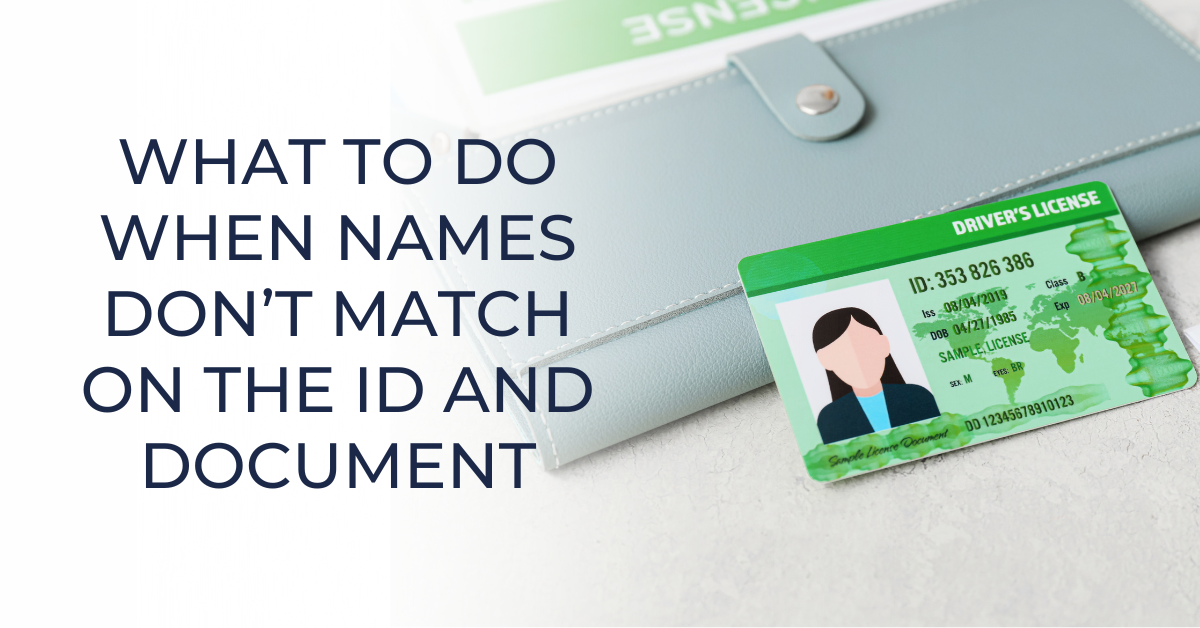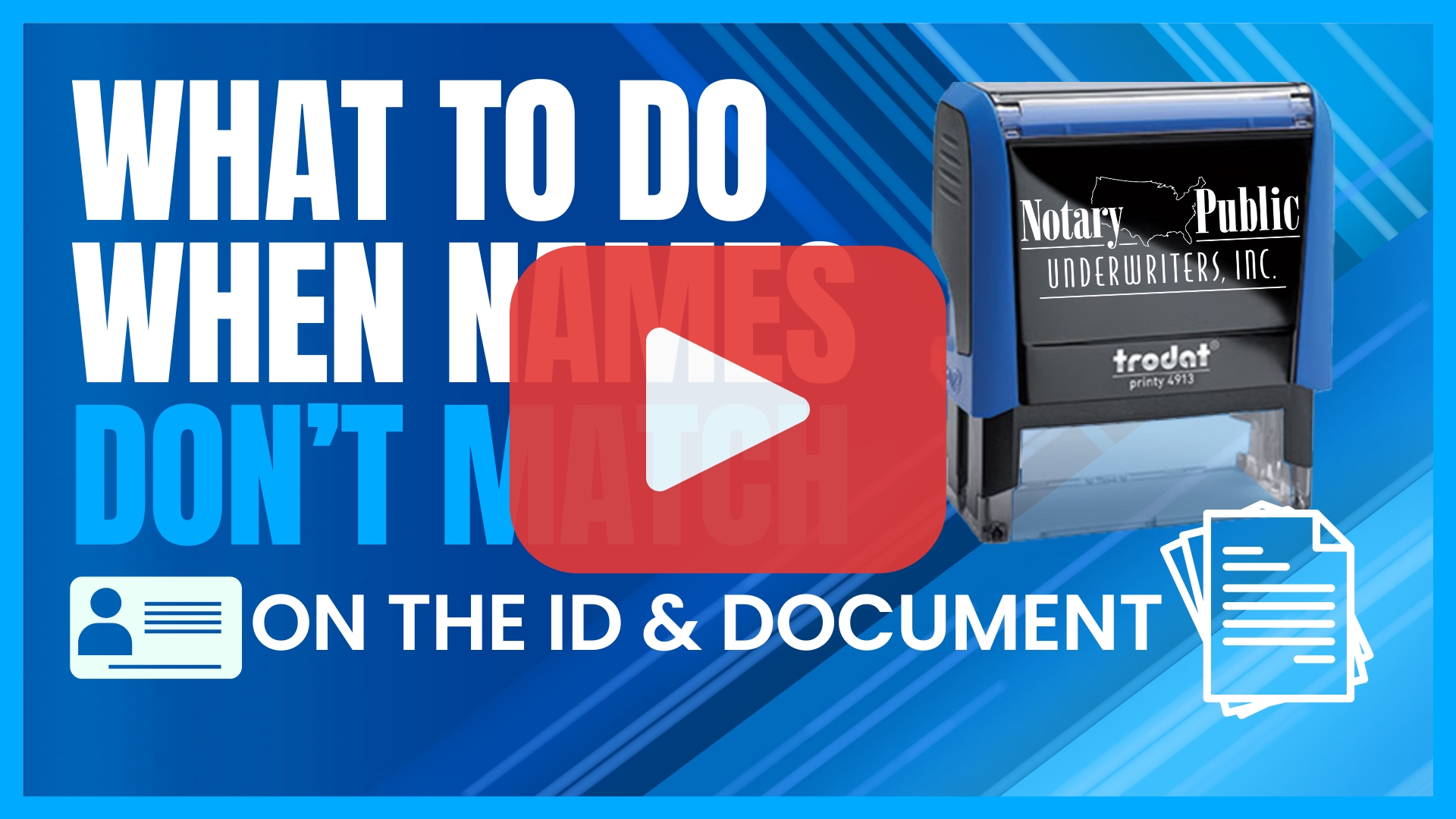Notary Public Underwriters Blog
What to Do When Names Don’t Match on the ID and Document
- Details
- Published: August 12, 2024

When identifying a principal signer, a notary may find that the name on the principal’s identification credential doesn’t exactly match how their name appears on the document presented for notarization.
This is a common issue, particularly when individuals have recently married or divorced and have not updated their ID, or when they use a different name variation day-to-day versus how their legal name might appear in a document.
Notaries can possibly resolve these types of name discrepancies, if their state notary laws and/or rules don’t prevent them from employing the following strategies.
The "Reasonableness Test"
One way to assess if a minor discrepancy is acceptable can be thought of as the “reasonableness test.” For example:
- the signer’s name on the document is “Michael J. Smith” and
- the signer’s name on his ID credential is “Michael James Smith,” and
- the notary is given other records or credentials that show this person uses both variations (Michael J. and Michael James), and
- the notary has no other evidence or cause to think an attempted fraud is occurring…
… then the notary could reasonably conclude that the present signer and the person named in the document presented for notarization are the same.
Suffix Issues
A different type of name variation that is occasionally linked to fraud involves suffixes, such as “Jr.” or “Sr.” Sadly, there have been actual cases of fraud involving family members of the same name—except that one was “Jr.” and the other “Sr.,” or one was “III” (the “third”) and the other, “IV.” For example:
- if the document presented for notarization shows the principal signer’s name containing a suffix, but
- the identification given to the notary does not,
- then the notary must insist on more documentary evidence to reasonably establish that the individual personally present is indeed the person named in the document. Explain to the present signer that you are simply performing your due diligence.
Alternative Forms of ID or Credible Witness
When asking for an alternative form of ID, ask first for a credential that is specified or that will satisfy your state’s notary law requirements for satisfactory identification. If the principal does not have such a credential, and if your state allows it, you may ask if the principal has someone who can act as a credible witness subject to your state’s notary law requirements.
Most states that authorize use of a credible witness allow one credible witness personally known by the notary and who personally knows the principal signer; or two credible witnesses not personally known by the notary but who the notary can identify by examining their satisfactory evidence of identification. Notaries identifying a principal signer by use of a credible witness must carefully follow all applicable requirements of notary law and administrative rules for this process—be sure you are knowledgeable of those requirements.
Unable to Confirm Identity
Ultimately, if the present principal signer cannot provide sufficient information or evidence enabling a notary to reasonably verify that the person is the same principal signer named in a document presented for notarization, the notary must decline the notarization. When declining under these circumstances, consider offering to notarize another time, if the person can present satisfactory evidence of their identity.
Finally, always document every notarial act you perform in a record book (journal) of notarial acts, including how you identified each person for whom you officiated. Carefully record any special circumstances, including if the notarization could not be completed, and why, in your journal entry.
Watch our YouTube video:
Related Article(s)
Can I Notarize When the Person Has No ID?
What to Do When the Notary Certificate Is Missing?
How to Handle Out-Of-State Documents
What Should I Do When There's No Room for My Notary Stamp?
Can I Notarize a Document That Is Already Signed?
How to Assess Signer Awareness or Coercion
How to Notarize Signatures on Handwritten Documents

